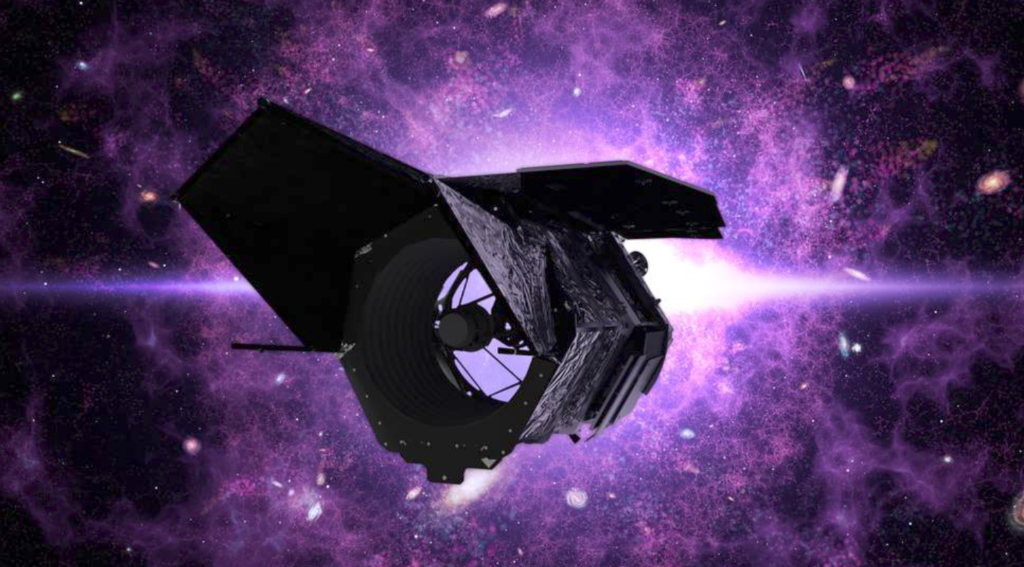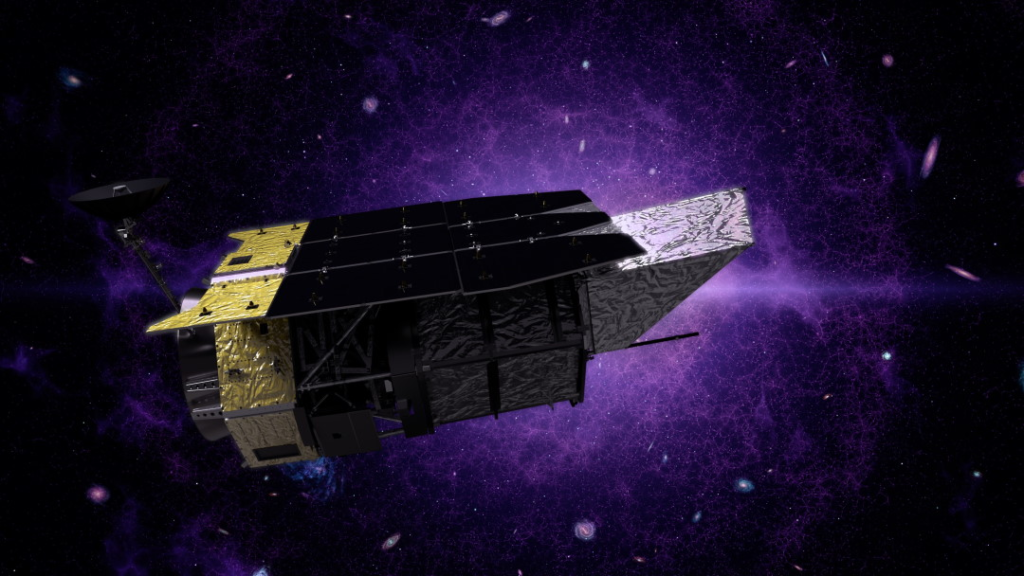
What Makes The Roman Space Telescope So Special?
It seems like just yesterday we watched the James Webb Space Telescope lift off into space followed by the release of its first images and schedule. While this mission took multiple decades and billions of dollars, NASA continues to work on new and ambitious projects. A great example is the Roman Space Telescope, meant to provide a host of new information and opportunity.
Specifically, the telescope’s science program will include dedicated investigations to tackle outstanding questions in cosmology, including the effects of dark energy and dark matter, and exoplanet exploration. Often referred to as a much better Hubble Telescope because of the design and purpose. One big difference being the destination which it will share with Webb at L2.
There is far too much within the Universe to explore and look in depth. This reason among many others is exactly why the agency is already working towards another big telescope launch in only a few years from now. Here I will go more in-depth into the details of this telescope, what it plans to achieve, how it compares to other telescopes, and what makes it so special.
Recent Update

The Roman Space Telescope is a NASA observatory designed to settle essential questions in the areas of dark energy, exoplanets, and infrared astrophysics. The telescope has a primary mirror that is 2.4 meters in diameter (7.9 feet), and is the same size as the Hubble Space Telescope’s primary mirror. The Roman Space Telescope will have two instruments, the Wide Field Instrument, and the Coronagraph Instrument. The Wide Field Instrument will have a field of view that is 100 times greater than the Hubble infrared instrument, capturing more of the sky with less observing time. As the primary instrument, the Wide Field Instrument will measure light from a billion galaxies over the course of the mission lifetime. It will perform a microlensing survey of the inner Milky Way to find around 2,600 exoplanets. The Coronagraph Instrument will perform high contrast imaging and spectroscopy of individual nearby exoplanets.
Only a few days ago on the 20th, NASA tweeted saying, “Get in, Roman; we are going to L2! @NASA has announced that the Roman Space Telescope will launch on the @SpaceX Falcon Heavy rocket from @NASAKennedy.” Specifically, NASA just awarded a NASA Launch Services (NLS) II contract to Space Exploration Technologies Corporation (SpaceX) in Hawthorne, California, to provide launch service for the Nancy Grace Roman Space Telescope mission. The Roman Space Telescope is the top-priority large space mission recommended by the 2010 Astronomy and Astrophysics Decadal Survey. NLS II is an indefinite-delivery/indefinite-quantity contract. The total cost for NASA to launch the Roman telescope is approximately $255 million, which includes the launch service and other mission related costs. The telescope’s mission currently is targeted to launch in October 2026, as specified in the contract, on a Falcon Heavy rocket from Launch Complex 39A at NASA’s Kennedy Space Center in Florida.
The telescope’s science program will include dedicated investigations to tackle outstanding questions in cosmology, including the effects of dark energy and dark matter, and exoplanet exploration. Roman also includes a substantial general investigator program to enable further studies of astrophysical phenomena to advance other science goals. The telescope was previously known as the Wide Field InfraRed Survey Telescope (WFIRST), but it was later renamed in honor of Dr. Nancy Grace Roman for her extraordinary work at NASA, which paved the way for large space telescopes.
Telescope Overview

Now that we know more about some of the recent news regarding this next generation telescope, we can take a closer look at what exactly makes it so special. Scheduled to launch in the mid-2020s, the Nancy Grace Roman Space Telescope will function as Hubble’s wide-eyed cousin. While just as sensitive as Hubble’s cameras, the Roman Space Telescope’s 300-megapixel Wide Field Instrument will image a sky area 100 times larger. This means a single Roman image will hold the equivalent detail of 100 pictures from Hubble. To put this in perspective, NASA provides a graphic that highlights the difference between Roman and Hubble. Here you can see exactly how much more the Roman Space Telescope will be able to capture and observe.
The mission’s wide field of view will allow it to generate never-before-seen big pictures of the universe, which will help astronomers explore some of the greatest mysteries of the cosmos, including why the expansion of the universe seems to be accelerating. One possible explanation for this speed-up is dark energy, an unexplained pressure that currently makes up 68 percent of the total content of the cosmos and may have been changing over the history of the universe. Another possibility is that this apparent cosmic acceleration points to the breakdown of Einstein’s general theory of relativity across large swaths of the universe. The Roman Space Telescope will have the power to test both of these ideas. To learn more about dark energy, the Roman Space Telescope will use its powerful 2.4-meter mirror and Wide Field Instrument to do two things: map how matter is structured and distributed throughout the cosmos and measure how the universe has expanded over time. In the process, the mission will study galaxies across cosmic time, from the present back to when the universe was only half a billion years old, or about 4 percent of its current age.
The Roman Space Telescope will do this through multiple observational strategies, including surveys of exploding stars called supernovae and galaxy clusters, and mapping out the distribution of galaxies in three dimensions. Measuring the brightness and distances of supernovae provided the first evidence for the presence of dark energy. The Roman Space Telescope will extend these studies to greater distances to measure how dark energy’s influence increased over time. Roman Space Telescope will measure precise distances to galaxy clusters to map how they grew over time. The mission will also pinpoint the distances to millions of galaxies by measuring how their light becomes redder at greater distances, a phenomenon called redshift. The farther off a galaxy is, the redder its light appears when we see it. Mapping out the 3-D positions of galaxies will allow astronomers to measure how the distribution of galaxies has changed over time, providing another measure of how dark energy has affected the cosmos.
The Wide Field Instrument (WFI) is a infrared camera that will allow scientists to explore the cosmos all the way from the edge of our solar system to the farthest reaches of space. Peering far across the universe is like looking back in time to when the universe was much younger. Seeing the universe in its early stages will help unravel how it has expanded throughout its history, which will hint at how it may continue to evolve. Each Roman image will capture a patch of the sky bigger than the apparent size of a full Moon. Hubble’s infrared images, taken with its Wide Field Camera 3, are about 200 times smaller. Even Hubble’s widest exposures, taken with the Advanced Camera for Surveys, are nearly 100 times smaller. Over the first five years of observations, Roman will image over 50 times as much sky as Hubble covered in its first 30 years.
Our understanding of the cosmos has grown by leaps and bounds in recent decades, however many mysteries still remain. As the spacecraft’s giant camera, the WFI will help fill in the gaps by looking far across space and probing deep into dusty regions, including the star-studded heart of our Milky Way galaxy. The WFI’s sweeping infrared surveys will unveil countless celestial bodies and phenomena that would otherwise be difficult or impossible to find. The WFI has passed the preliminary design review, an important milestone for the mission. It means the WFI successfully met the design, schedule and budget requirements to advance to the next phase of development, where the team continues with the detailed design and fabrication of the flight hardware. The team has also flight-certified 24 detectors for the WFI, 18 of which will fly aboard the spacecraft while the remaining six serve as spares. These detectors will enable all of the mission’s science by converting starlight into electrical signals, which will then be decoded into high-resolution images of large patches of the sky.
By pioneering an array of innovative technologies, the Roman Space Telescope will serve as a multipurpose mission, furnishing a big picture of the universe and helping us answer some of the most profound questions in astrophysics, such as how the universe evolved into what we see today, and what is its ultimate fate.
Conclusion
The Roman Space Telescope is making big strides as its launch expected to happen in the mid 2020s gets closer and closer. The recent contract with SpaceX to use the Falcon Heavy is a great example of some of the milestones it’s making. We will have to wait and see how it progresses and the impact it has on the space industry.
